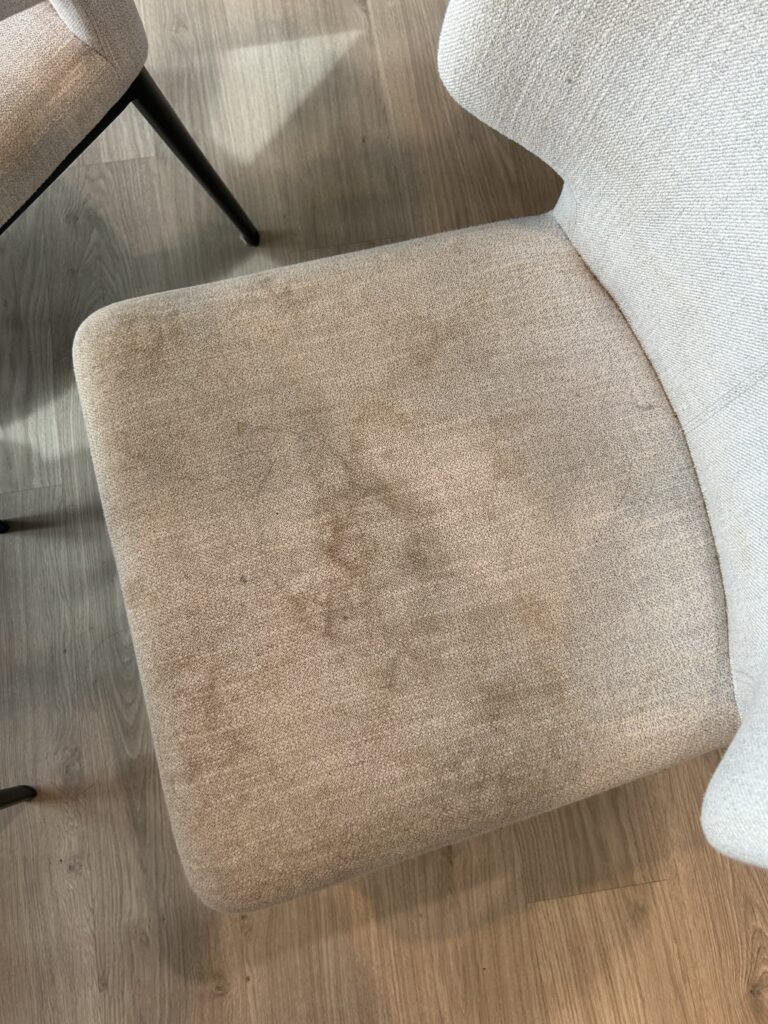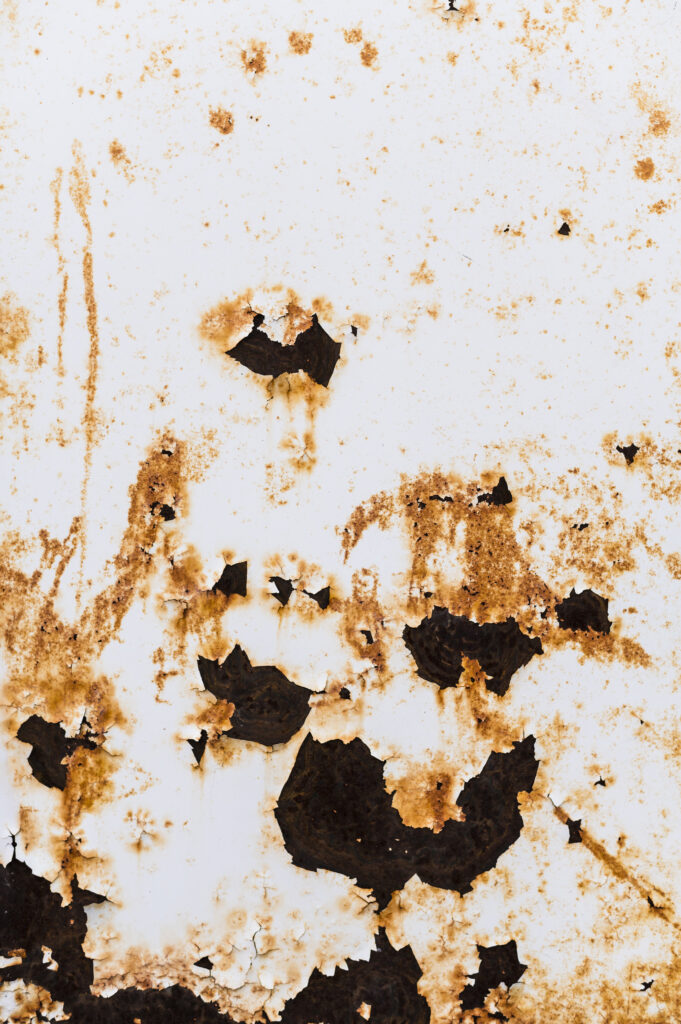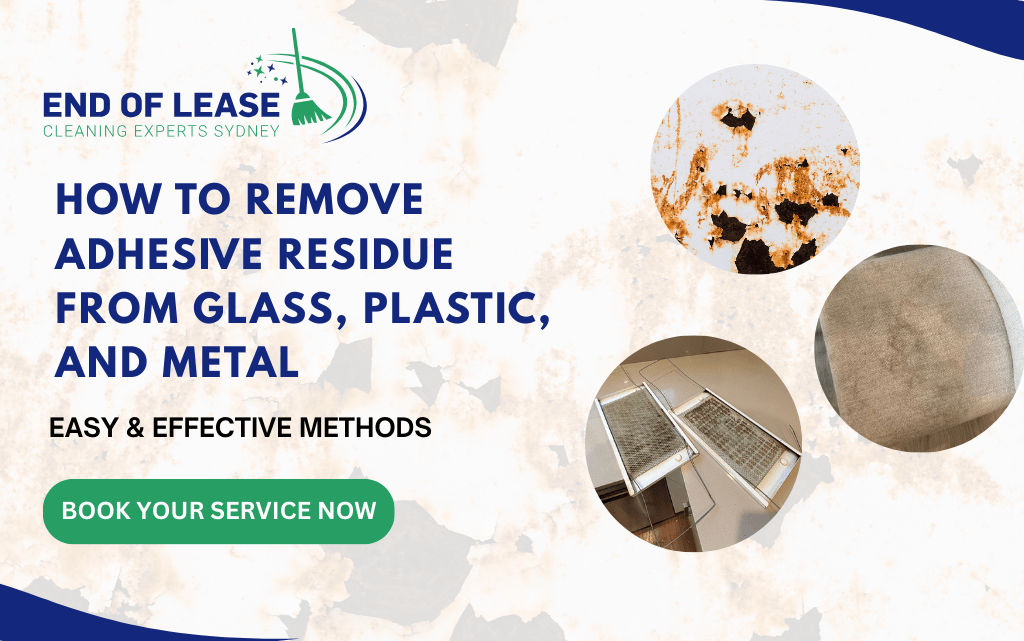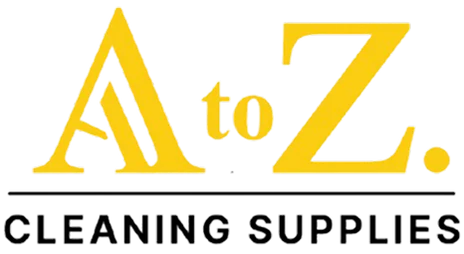If there is anything that quickly becomes a major eyesore, it is adhesive residue. Anything like leftover glue from stickers, tape marks on moving boxes, or labels on appliances, it not only looks messy but also attracts dust and dirt over time.
In fact, removing it is also a hassle. Improperly removing can scratch glass, cloud plastic, or even leave metal surfaces full.
In this guide, we’ll show you how to remove adhesive residue safely and effectively from common materials, such as glass, plastic, and metal. You’ll also learn natural methods, common mistakes to avoid, and when it’s better to hire professionals like End of Lease Sydney.
Understanding Adhesive Residue
Knowing what causes the residue and how it behaves on each material helps you choose the safest and most effective removal method.
What Causes Adhesive Residue?
Adhesive residue is the sticky film left behind after removing tapes, labels, or glue. Several factors make residue stubborn:
- Type of adhesive: Rubber-based adhesives stick more aggressively than acrylic or silicone-based adhesives.
- Surface type: Compared to rough metal or porous plastic, smooth glass is simpler to clean.
- Age and exposure: Over time, old glue may solidify, making removal more difficult.
- Heat and humidity: Adhesive can soften in heat or react with moisture, affecting removal methods.
Why Proper Removal Matters
It’s essential to know how to remove glue from metal residue correctly. Aggressive scraping or using chemicals the wrong way can:
- Scratch glass and leave permanent marks
- Cloud plastic, causing discoloration
- Corrode or dull metal surfaces.
- Compromise the value of appliances or furniture.
For tenants, improper removal can even cost part of your bond. Knowing safe and effective methods ensures surfaces remain intact and look new.
Read More: House Cleaning Sydney: 7 Expert Tips for a Sparkling Home
Preparation Before Cleaning
It’s necessary to have some tools and safety precautions before trying to remove adhesive residue. Here are some tools & supplies that you need:
- Microfiber cloths
- Rubbing alcohol or white vinegar
- Mild soap and warm water
- Plastic scraper or old credit card
- Petroleum jelly or cooking oil (for plastic surfaces)
- Mineral spirits (for metal)
Similarly for Safety Tips:
- Wear gloves to protect your skin.
- Ensure proper ventilation if using alcohol or solvents.
- Avoid mixing chemicals to prevent reactions.
How to Remove Adhesive Residue
The type of surface will determine how to safely remove adhesive residue. Here’s a straightforward, step-by-step guide for glass, plastic, and metal:
1) From Glass
- Start with soapy water for light residue.
- For stubborn marks, apply rubbing alcohol or vinegar.
- To keep from scratching, use a plastic scraper at a low angle.
- Use a microfiber cloth to clean it.
2) From Plastic
- Begin with warm, soapy water to loosen residue.
- Apply petroleum jelly or cooking oil to stubborn spots.
- Avoid harsh solvents that can melt or discolor plastic.
- Rinse and dry to restore the original surface.
3) From Metal
- Soak and lightly scrub with warm water and soap
- Use mineral spirits or adhesive remover to remove adhesive from metal that are very hard to get rid of.
- Polish afterward to bring back the luster and stop rust.
Natural & DIY Methods
For minor jobs or environmentally friendly cleaning, try these simple natural solutions:
- Baking soda: Combine with water to form a mild abrasive that lifts sticky residue.
- Lemon or eucalyptus oil: Helps loosen adhesive gently without harsh chemicals.
- Hairdryer heat method: Apply gentle heat to soften the adhesive, making it easier to remove.
These approaches are ideal for sensitive surfaces where strong chemical cleaners could cause damage.
Common Mistakes to Avoid
Removing adhesive residue can be tricky, and certain mistakes can damage your surfaces. These are common errors most people make when trying to DIY cleaning:
- Using abrasive pads or steel wool that scratch surfaces
- Applying excessive force, which can damage materials
- Mixing chemicals without safety precautions, which can cause stains or reactions.
Avoiding these mistakes ensures your glass, plastic, or metal surfaces remain intact while cleaning.



When to Call a Professional Cleaning Service
Sometimes, the adhesive residue is so stubborn that DIY methods won’t work, especially when it’s a large-scale or sensitive surface like commercial glass panels, stainless steel appliances, or rental property fixtures. Professionals like End of Lease Sydney ensure:
- Safe and effective residue removal
- 100% bond back guarantee for tenants
- Eco-friendly and non-toxic cleaning methods
- Efficient cleaning that saves time
Why Choose End of Lease Sydney for Adhesive Residue Removal
- Experienced cleaners with specialized tools for glass, plastic, and metal
- Safe techniques that prevent scratches and surface damage
- Flexible scheduling and competitive
- Peace of mind knowing every surface
Conclusion
Even though adhesive residue may not seem like a big deal, if you don’t remove it correctly, it could permanently damage your surfaces.
For little jobs, you can try using rubbing alcohol, baking soda, oils, or heat to do it yourself. If you need to remove glue from a difficult or huge area, such as a rental property or a business space, talk to professionals like End of Lease Sydney.
Their method is safe, effective, and environmentally friendly, so you can be assured that your surfaces will be clean and you won’t have to worry.
If you’re struggling already with adhesive residue, contact us today to remove it efficiently and protect your bond or property value.
FAQs
Can vinegar remove adhesive from glass?
Yes, white vinegar dissolves most adhesives safely without scratching.
Is WD-40 safe on plastic?
Use cautiously and test a small area first—some plastics may discolor or soften.
How do professionals remove stubborn glue from metal?
They use mineral spirits and proper scrapers to safely lift adhesive without scratching.
Can adhesive residue damage surfaces over time?
Yes, residue left untreated can discolor, attract dirt, or corrode metal surfaces.
How can I remove adhesive residue without harsh chemicals?
Natural options like baking soda paste, lemon oil, or applying gentle heat work effectively.



